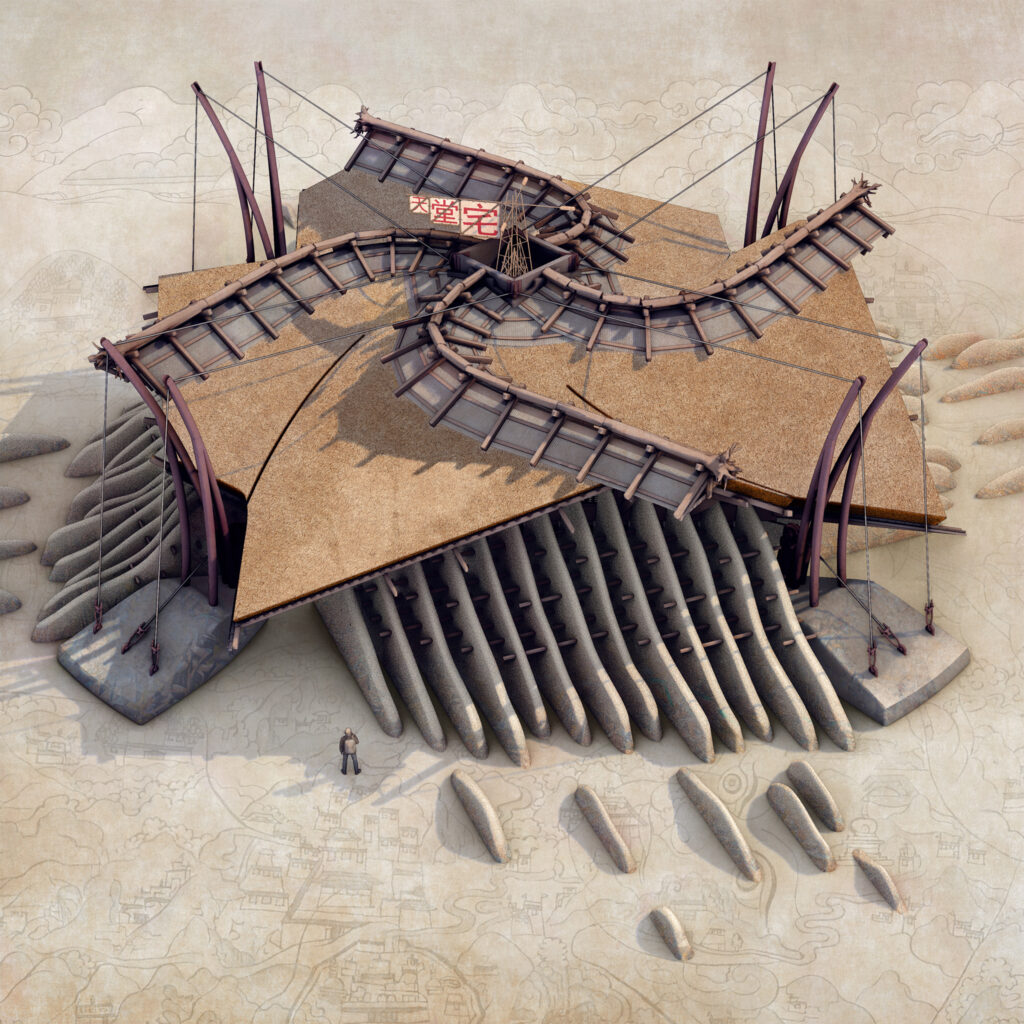
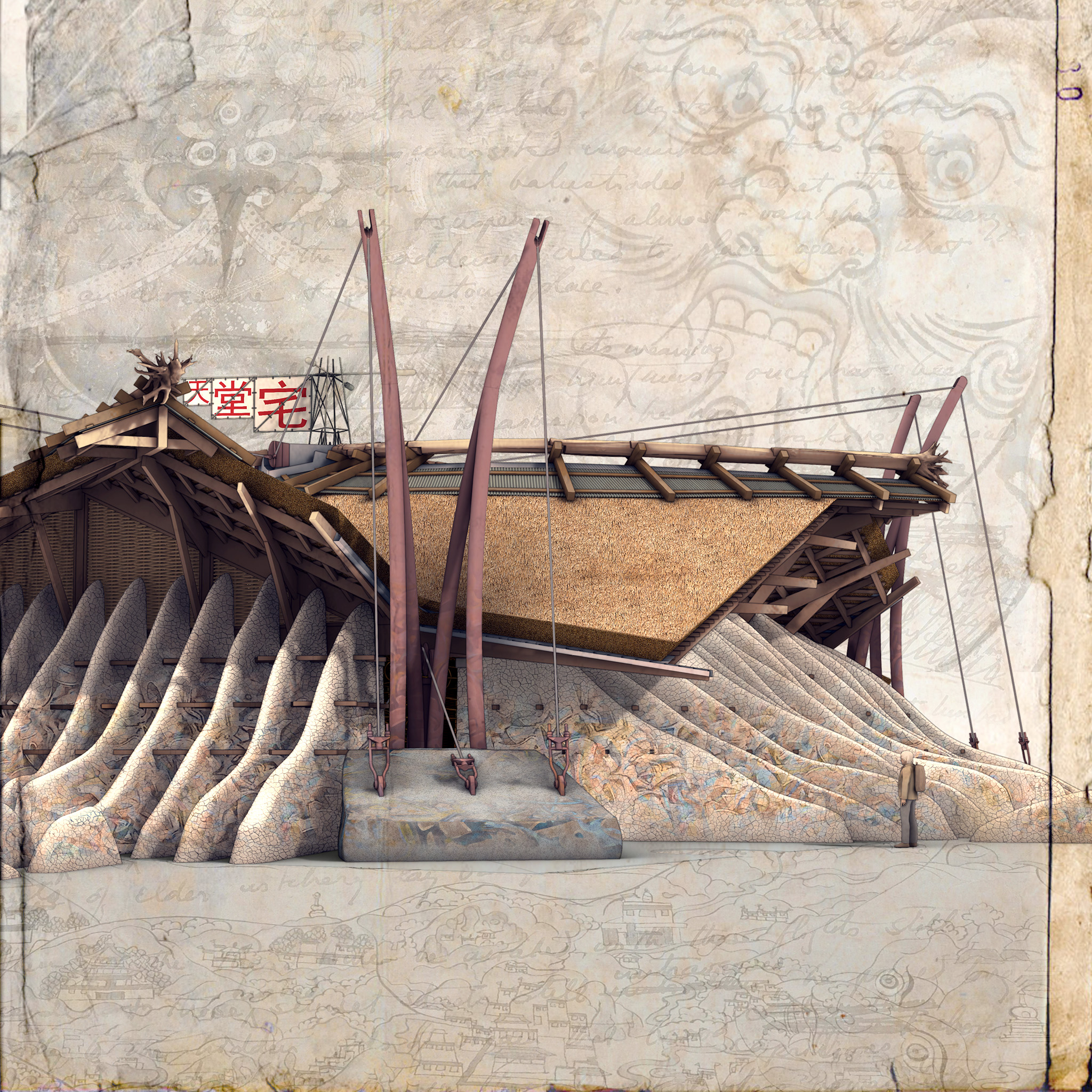
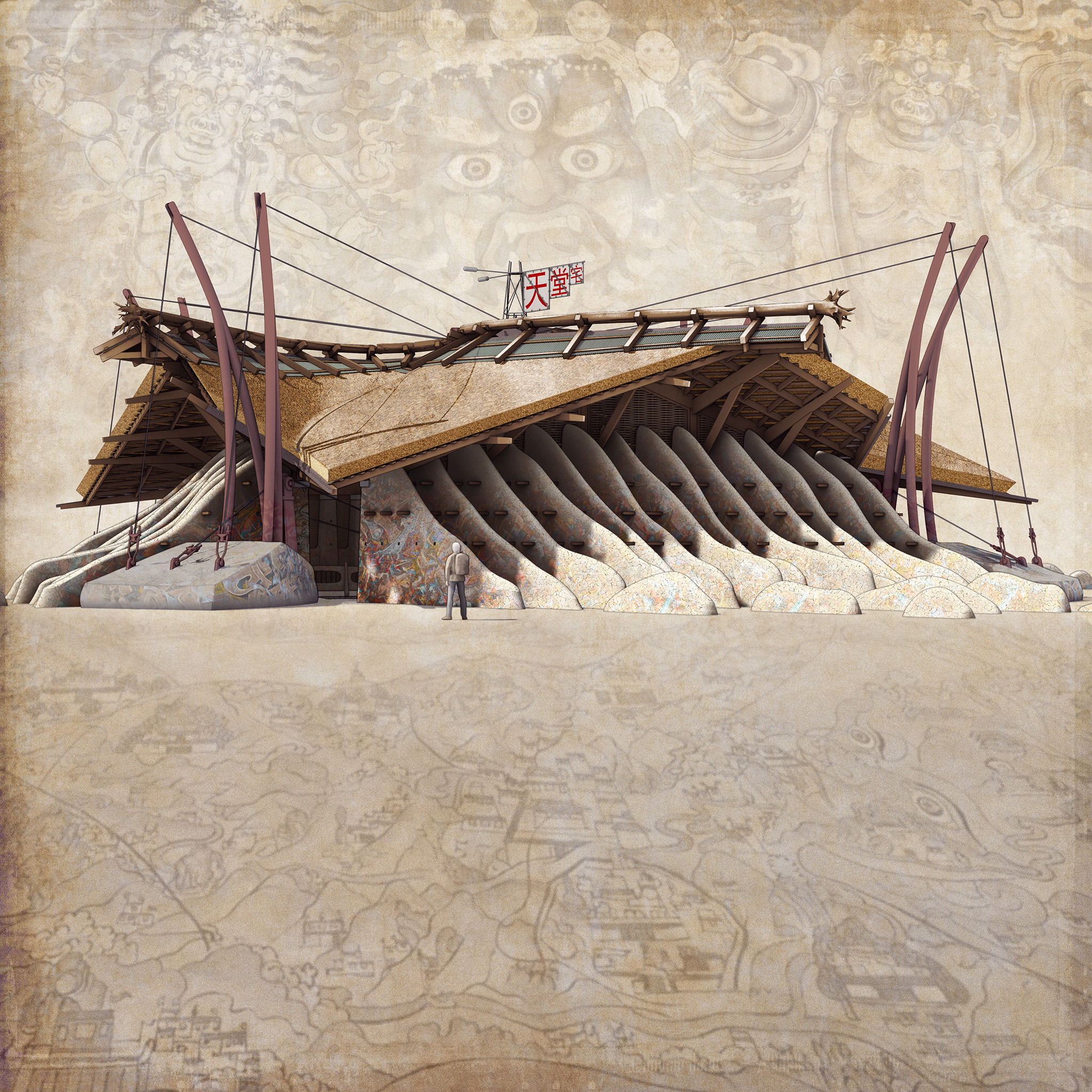

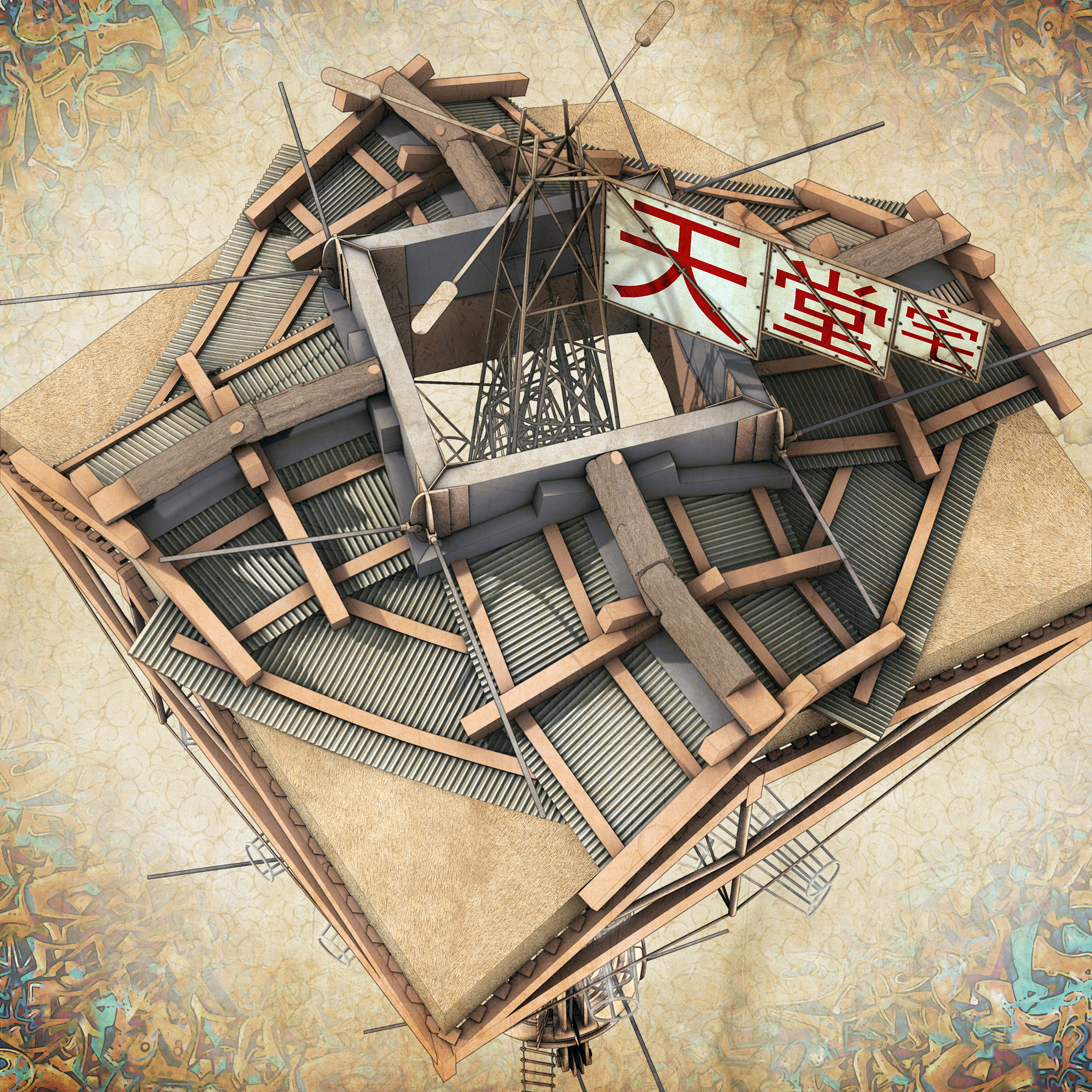
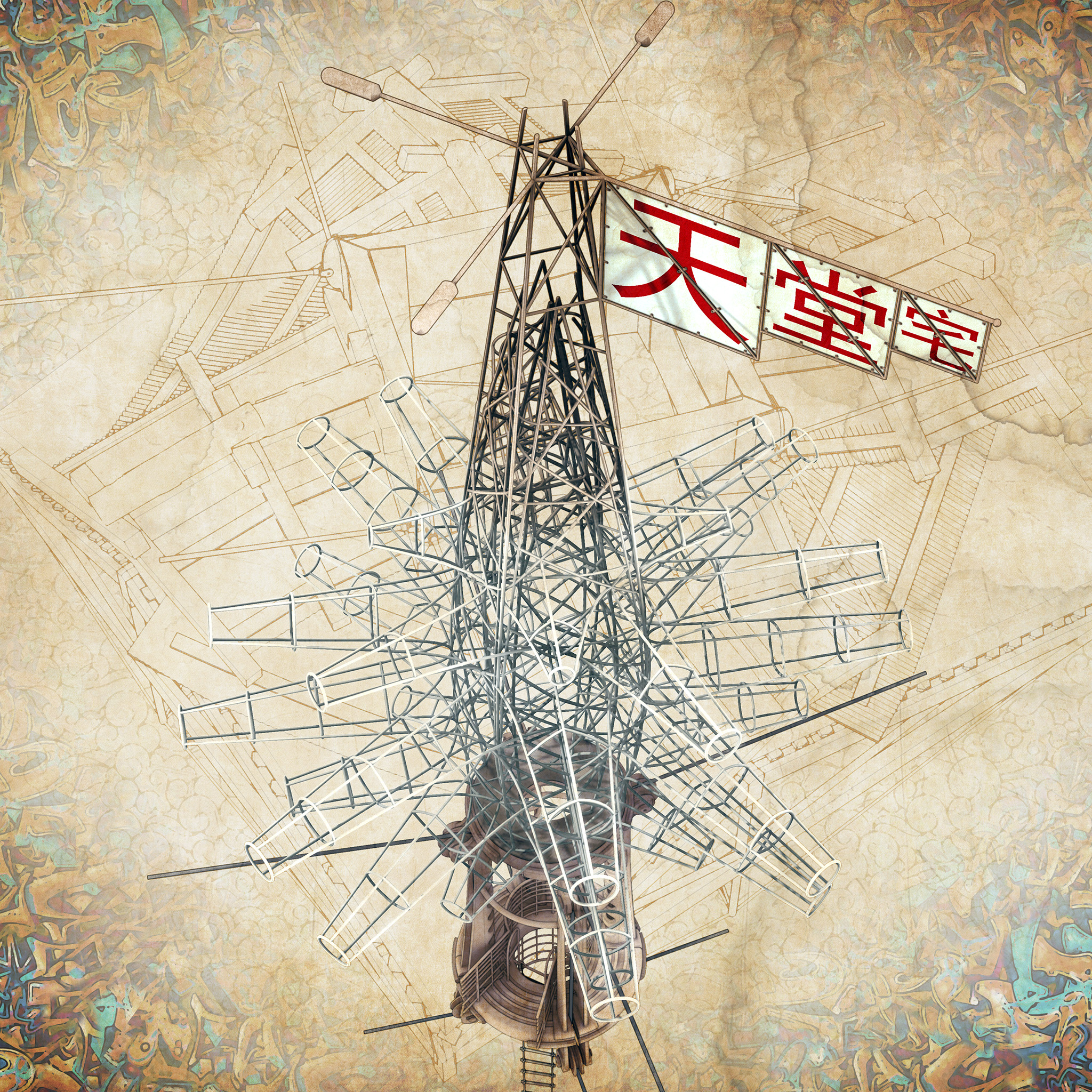
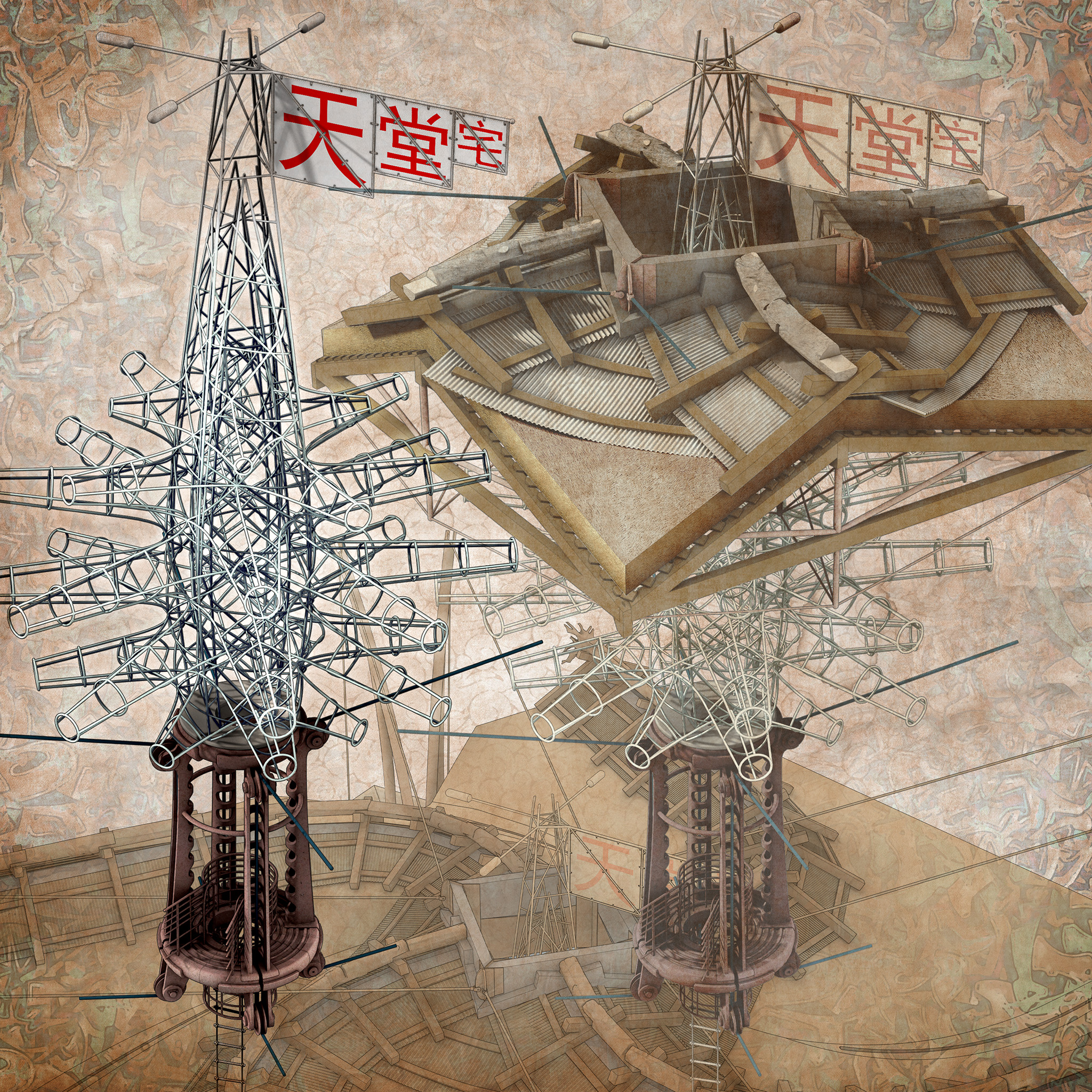
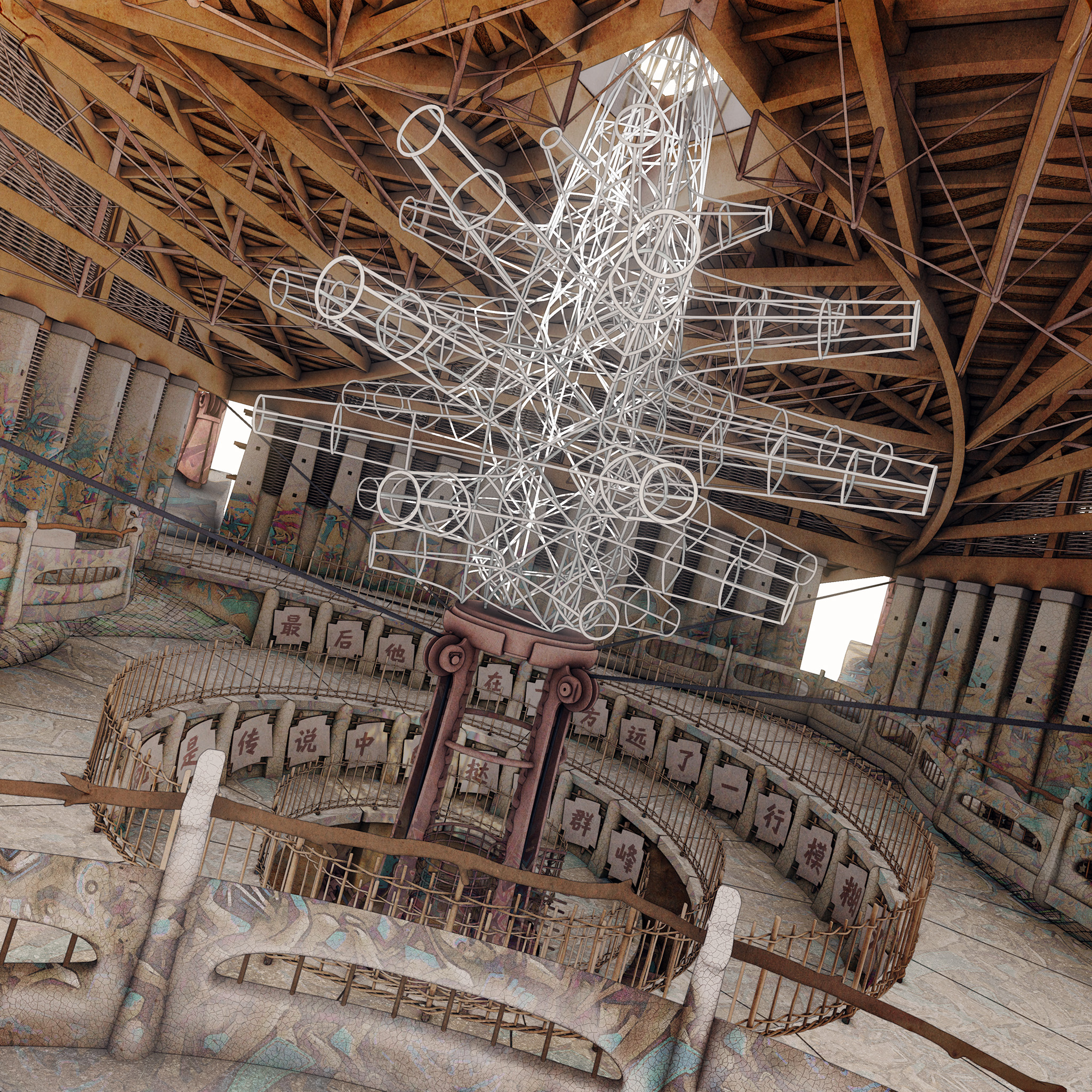
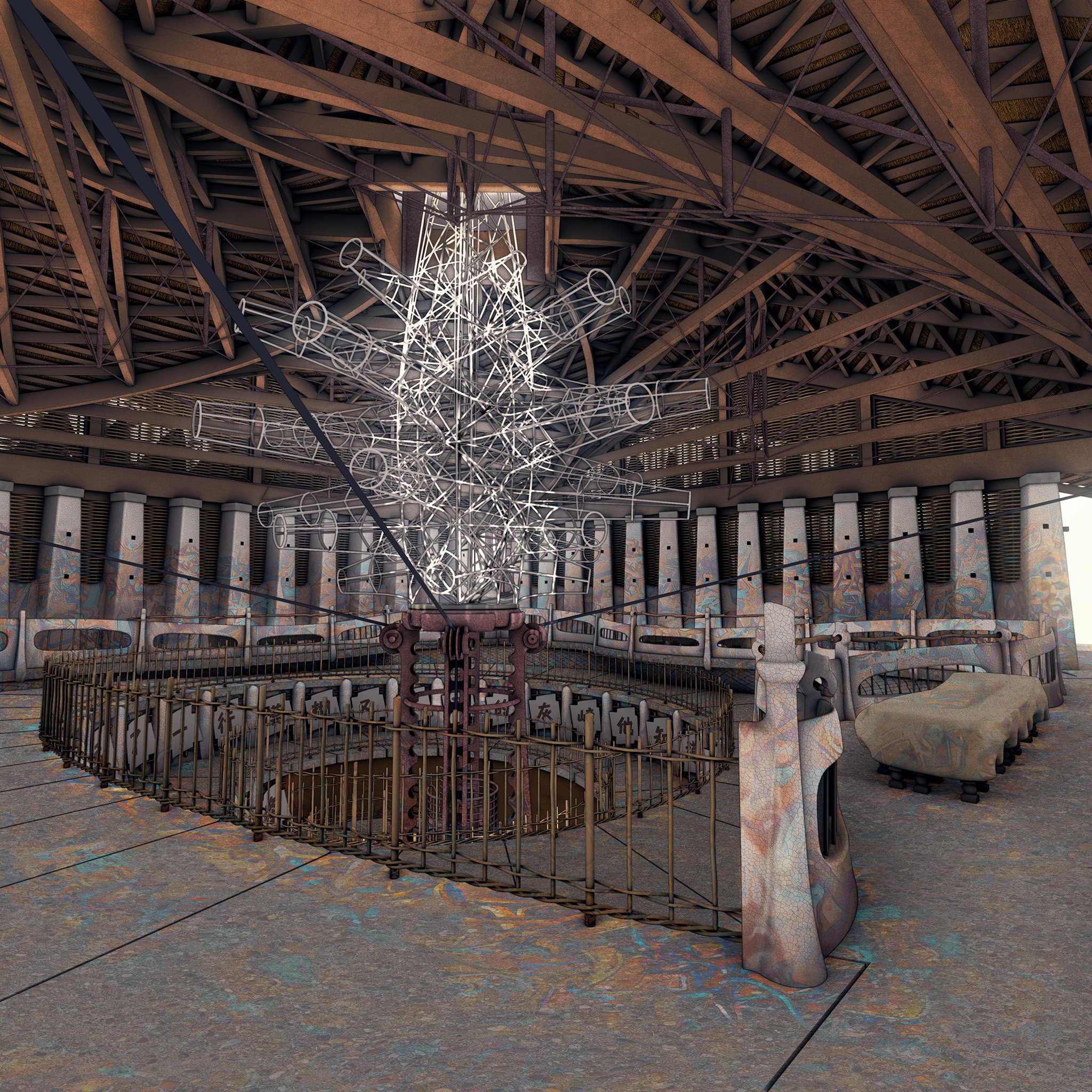
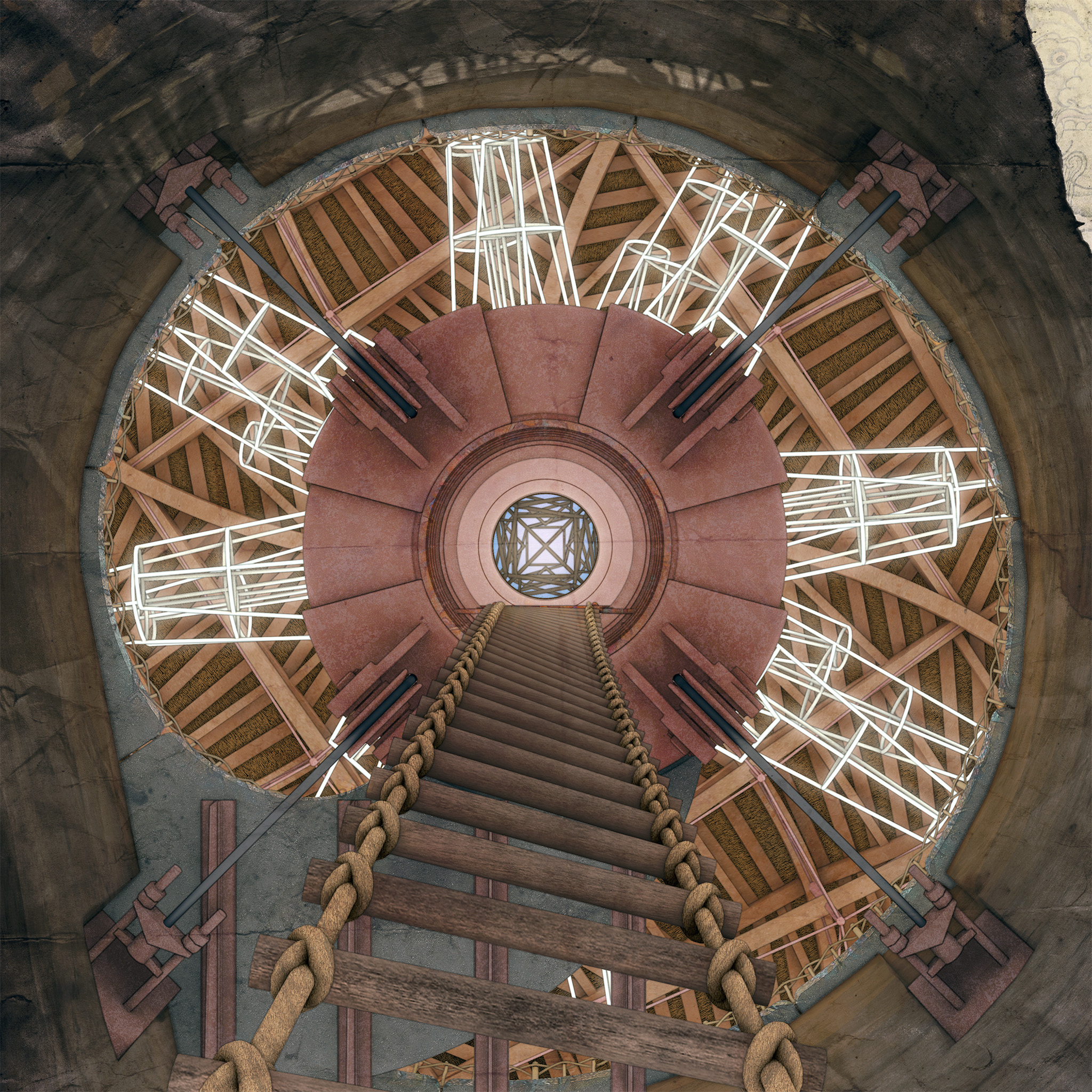
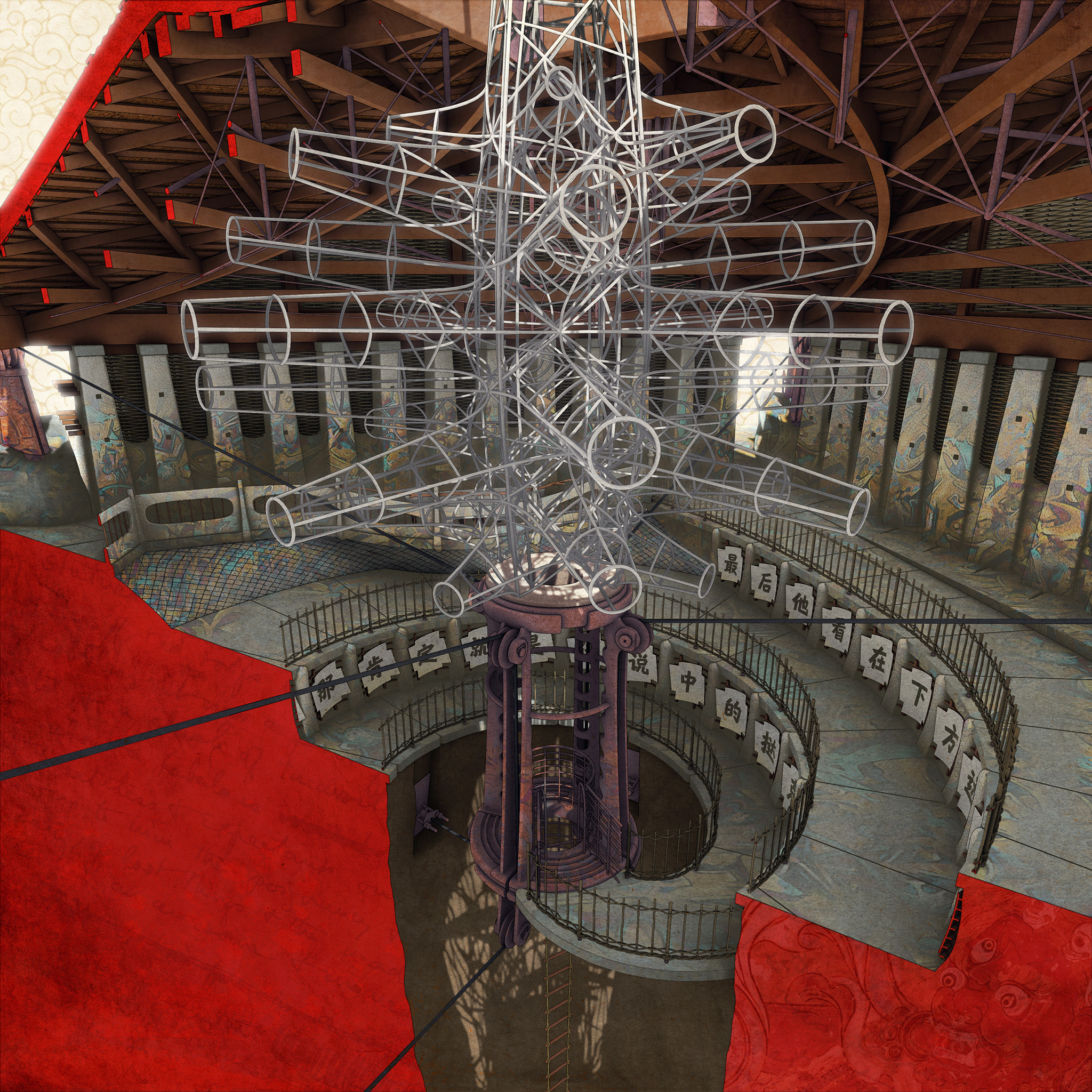

Other people’s dreams are invariably tedious and uninteresting, unlike the prophetic visions presented in fiction. Most of my dreams are in fact (twenty years on!) regurgitations of painful episodes from architecture school.
This particular project, however, was suggested to me by a dream, or by the recalled fragments of a dream that was distinctly different from my usual run of rehashed Yale School of Architecture nightmares. The site, which is not particularly indicated in these renderings (because it doesn’t particularly exist in the waking world), was described by one of those inevitably-unseen dream narrators as “inland” of the “Perry Coast”, which might have been on the Atlantic, somewhere south but not warm.
In the waking world, soon afterwards I discovered quite by accident that there is—or at least someone imagined there was—such a region; a supposed coastline and maritime province extending from South America to Antarctica, as if Tierra del Fuego was an isthmus and not an archipelago. It is indicated on the map of the Atlantic and the New World presented in 1513 to the Ottoman Sultan Selim I by corsair and geographer Piri Reis, apparently based on descriptions provided by one of Columbus’s sailors who had been captured in battle with the Turks.
Yeah, no kidding. The “Piri Coast” in other words.
In short order, the Piri Coast became mixed up in my head (in my day dreams, if not my night ones) with another country that seemed to exist principally in dreams: the Plateau of Leng (冷高原) which appears (and disappears) in the stories of Howard Phillips Lovecraft, who despite my best efforts is probably one of my favorite authors. One of his novellas has Leng, a place of prehuman evil, in deepest Antarctica; other works suggest it to be somewhere in central Asia, presumably part of the greater Himalayan region. And its one notable inhabitant, dwelling in a prehistoric monastery, is after all referred to as a “lama”. But Lovecraft spilt the greatest amount of ink on the Leng described in his 1927 novella The Dreamquest of Unknown Kadath, and that Leng is part of a vast alternative dimension that certain individuals from our world can access quite perilously through dreams. A pivotal scene in that epic takes place in the dreadful monastery, which ultimately is revealed to be situated over one of the entrances of the Great Abyss, the charnel underworld of Lovecraft’s Dreamlands. In that antediluvian pile presides the Lama of Leng, the High Priest Not To Be Described, the Tcho-Tcho Lama: a lumpish figure completely-veiled in yellow silk on a strangely-proportioned gold throne, who communicates solely through a code of notes blown with a disgustingly-carved ivory flute.
Somehow (and I will spare you the tedious evolution, or coalescence as it were) all of this fused into an architectural program. I mean, even inhuman and indescribable priests will need a break from their unspeakable duties and dreadful obligations at times; even your average hematophagous religious professional could use a professionally-designed vacation home, in a distant but not completely inconvenient part of the Dreamlands. On the Piri Coast, say.
Note the light-catching, star-shaped artwork (Lovecraftian entities just love, or hate, geometric-but-organic stellated forms), something between a kinetic sculpture and a weathervane; the odd-shaped couches; and finally of course the spiral ramp down to a pit that leads into the Great Abyss, a convenience if one is suddenly called back to the monastery in Leng for important business like the interrogation of meddling dreamers.
Dream-nonsense aside, one of the illustrations for this project—the section-in-perspective—earned me the unlikely title of “FINALIST: PROFESSIONAL DIGITAL/HYBRID MEDIA” in the 50th annual Ken Roberts (“KROB”) Memorial Delineation Competition. “Finalist” in this context does not imply nose-bleed territory, of course. Still, I suppose that it is something.
The following gallery consists of various preliminary and developmental graphics:
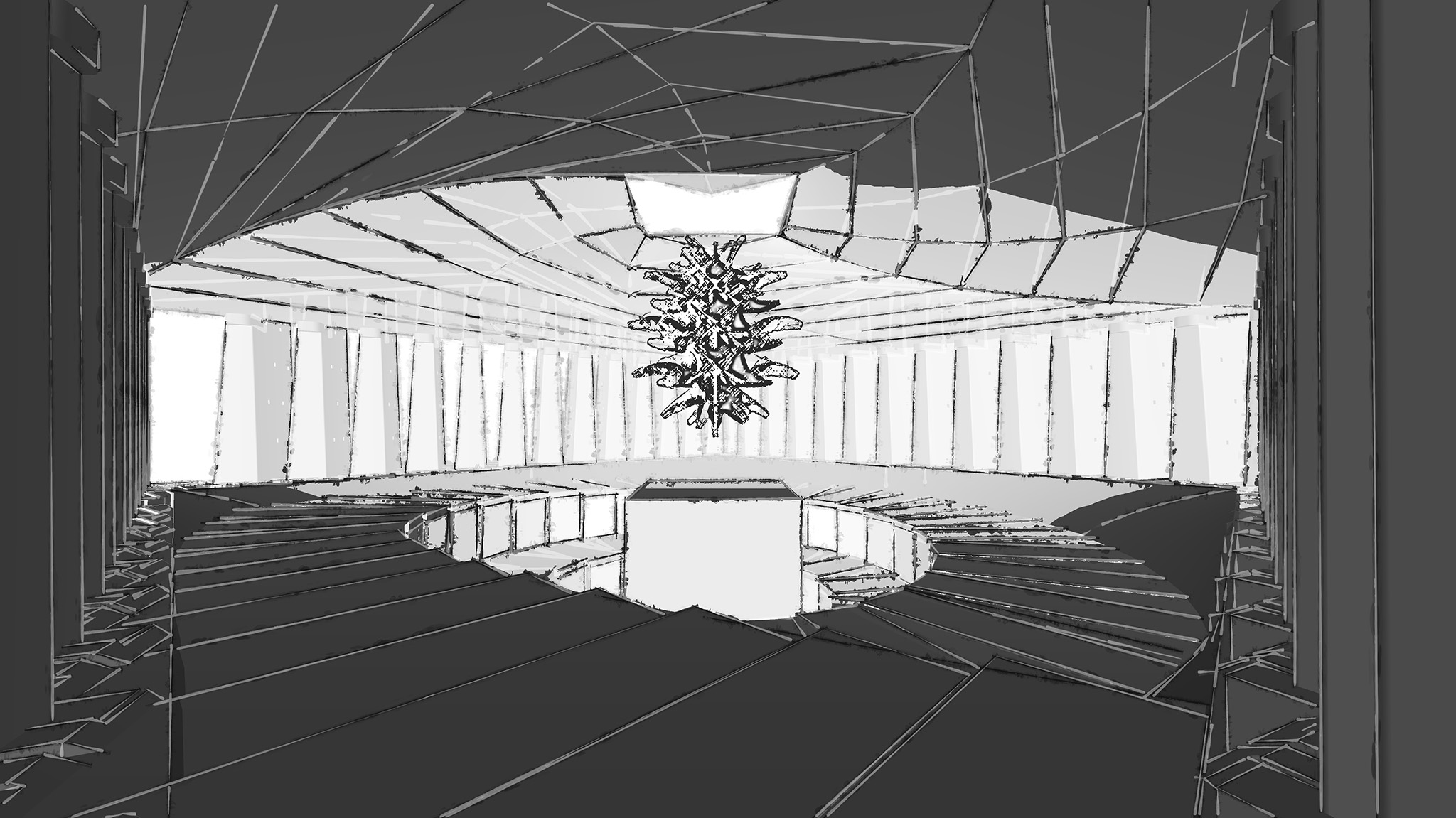

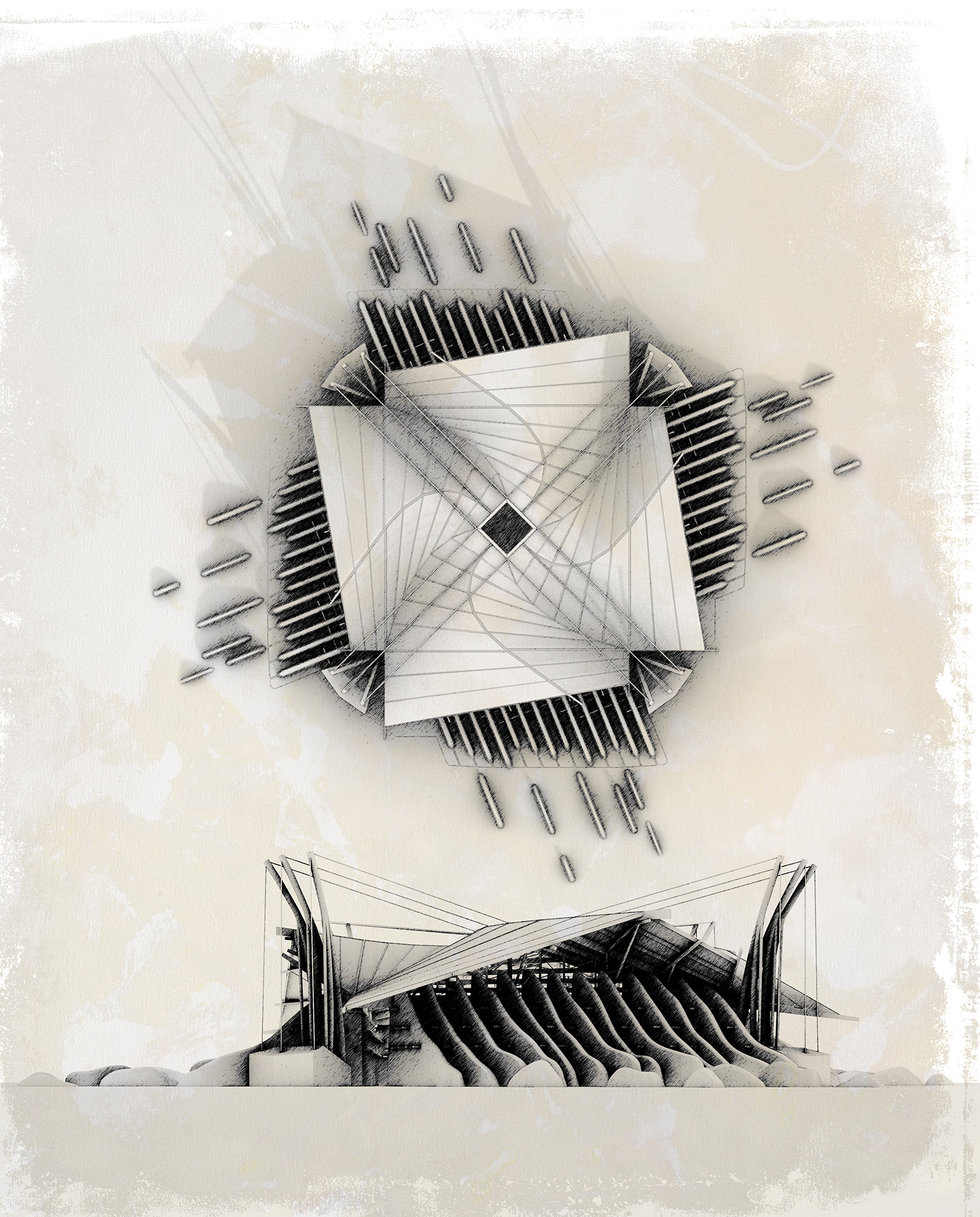
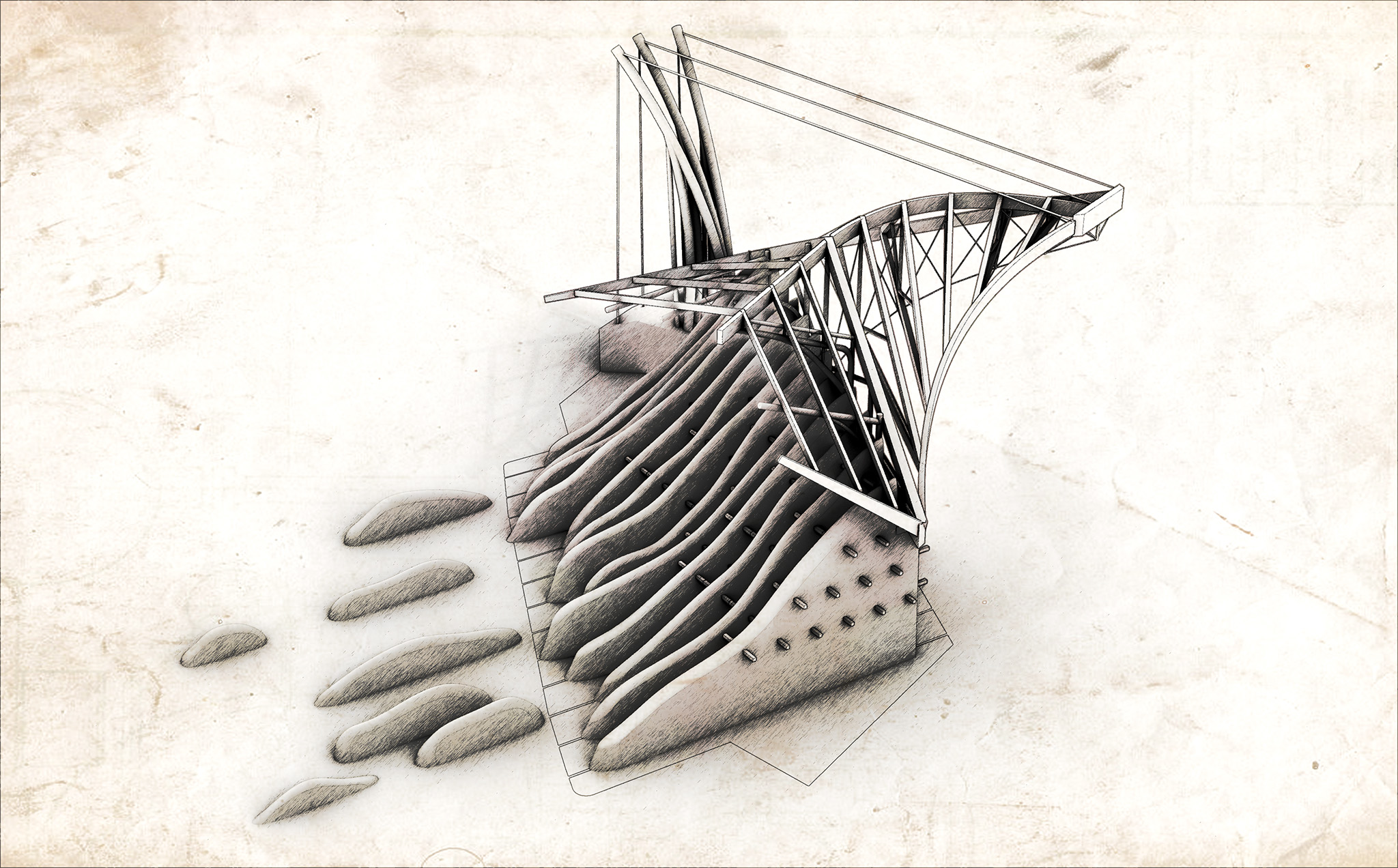
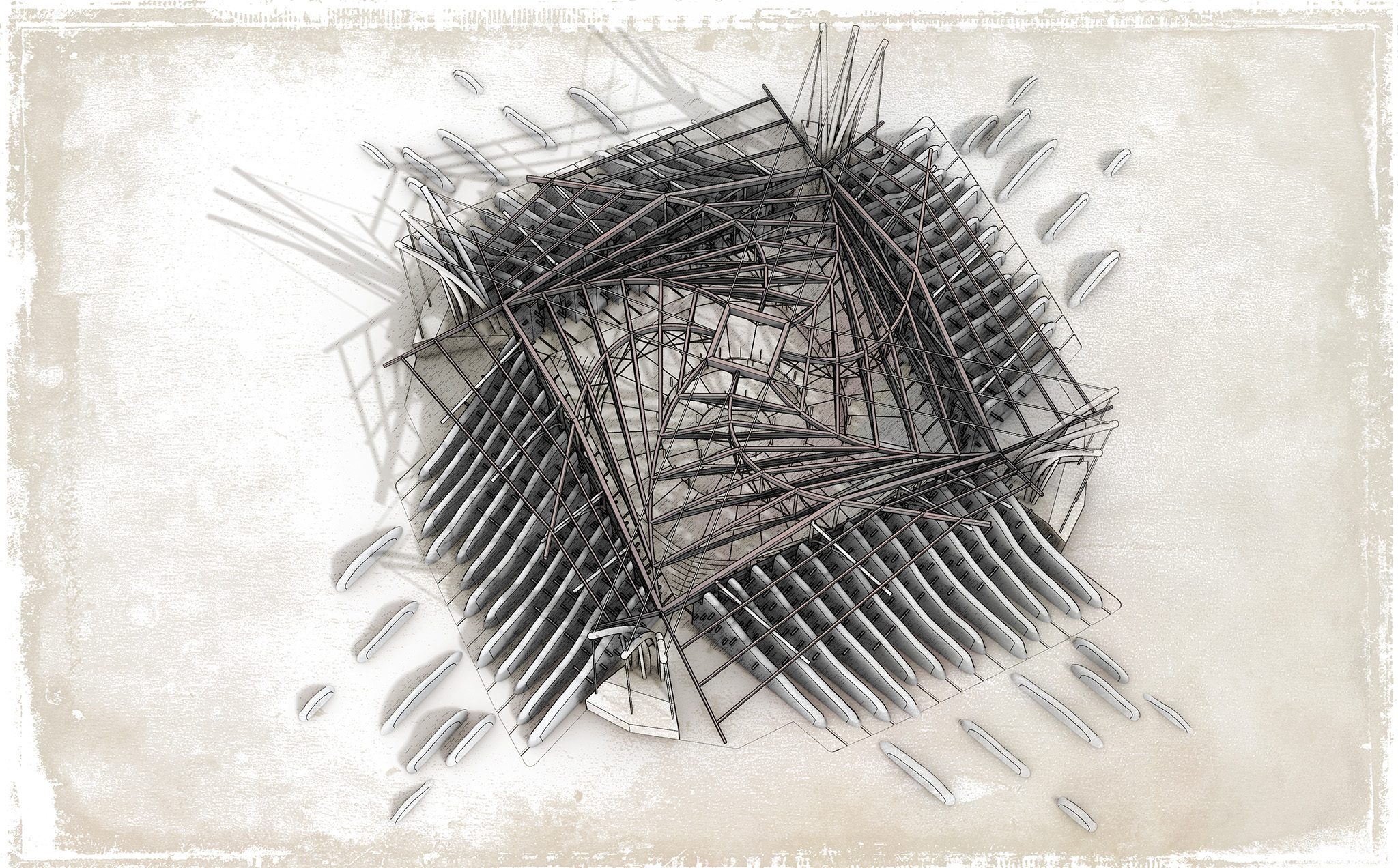

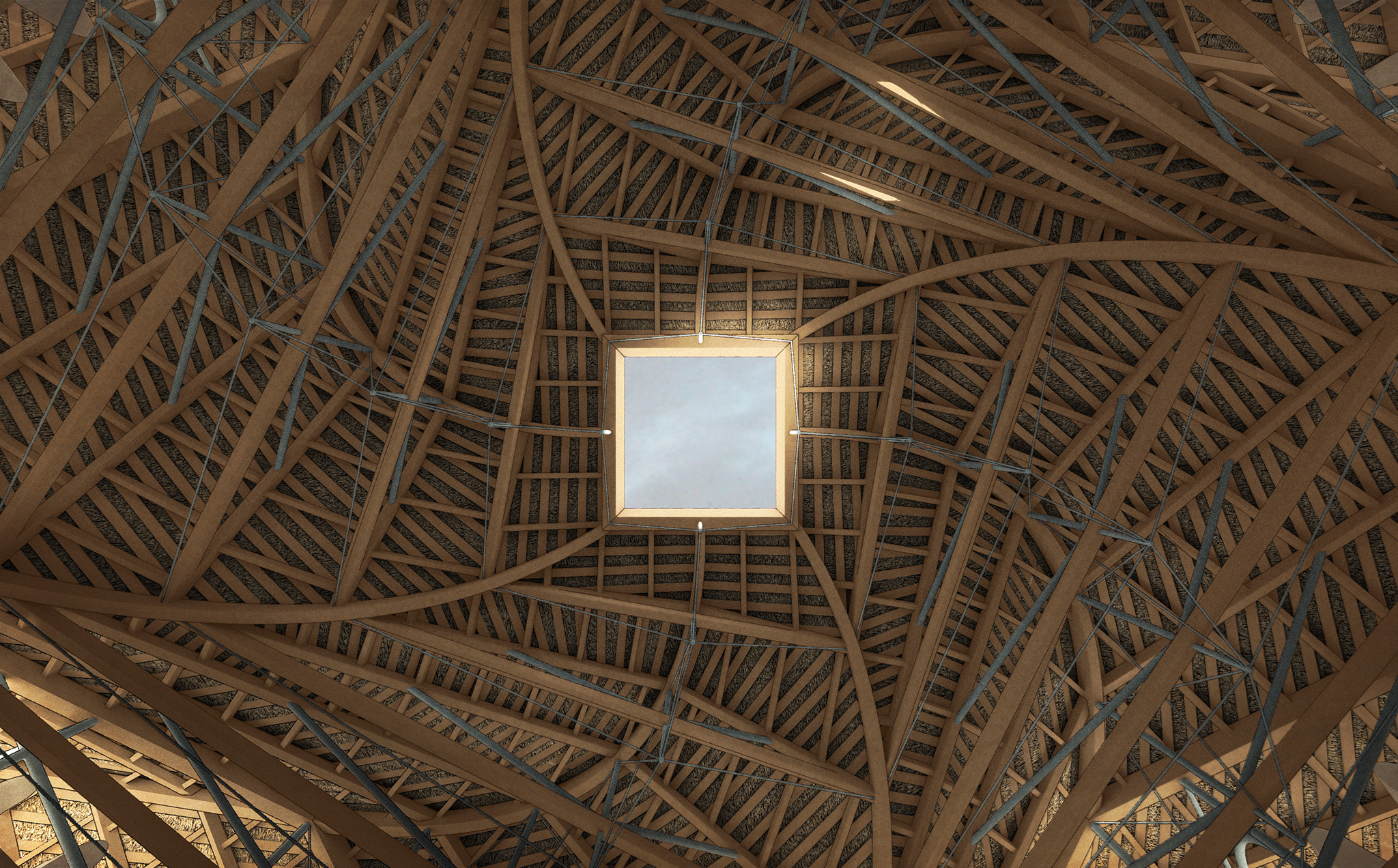

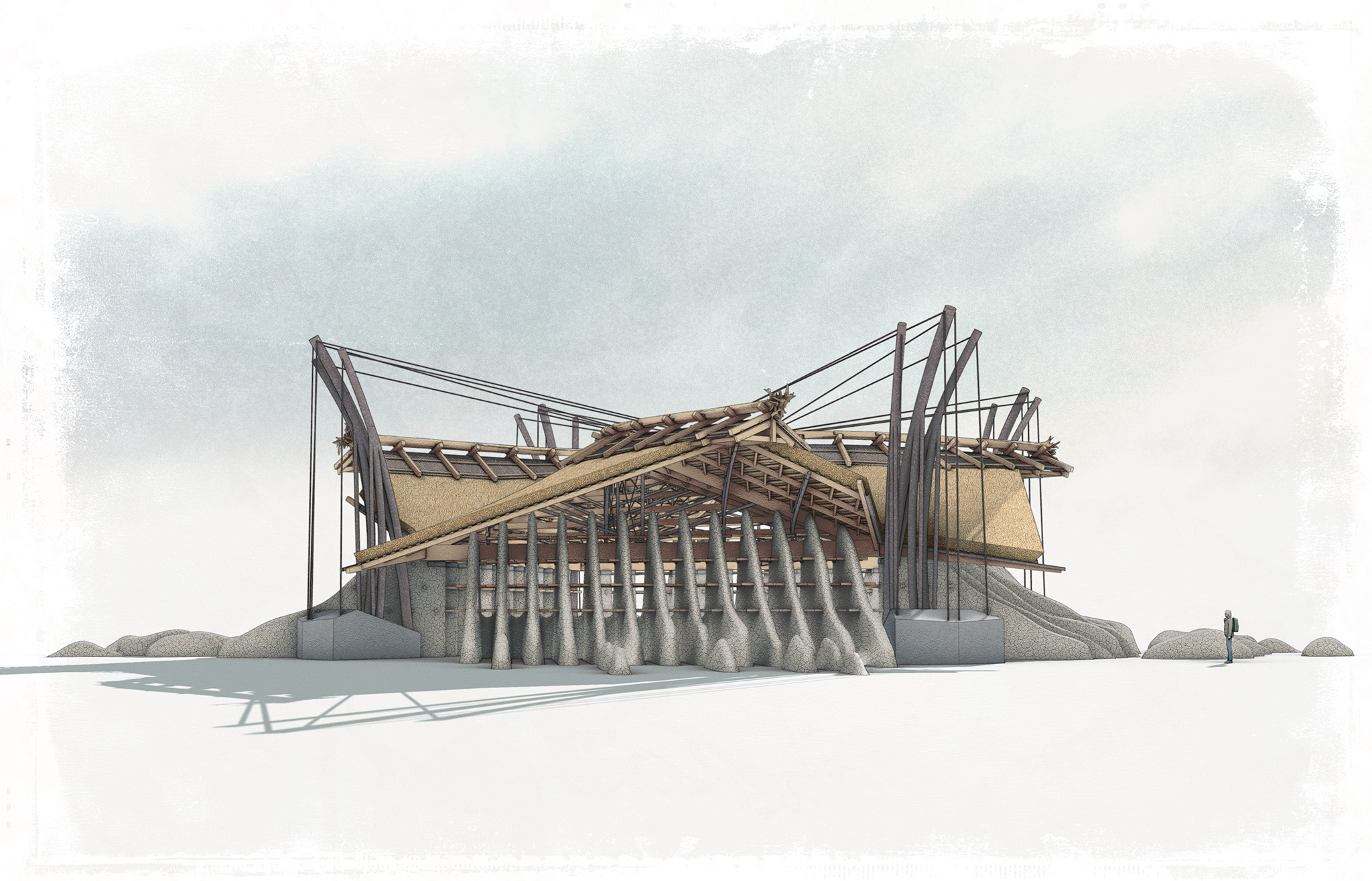
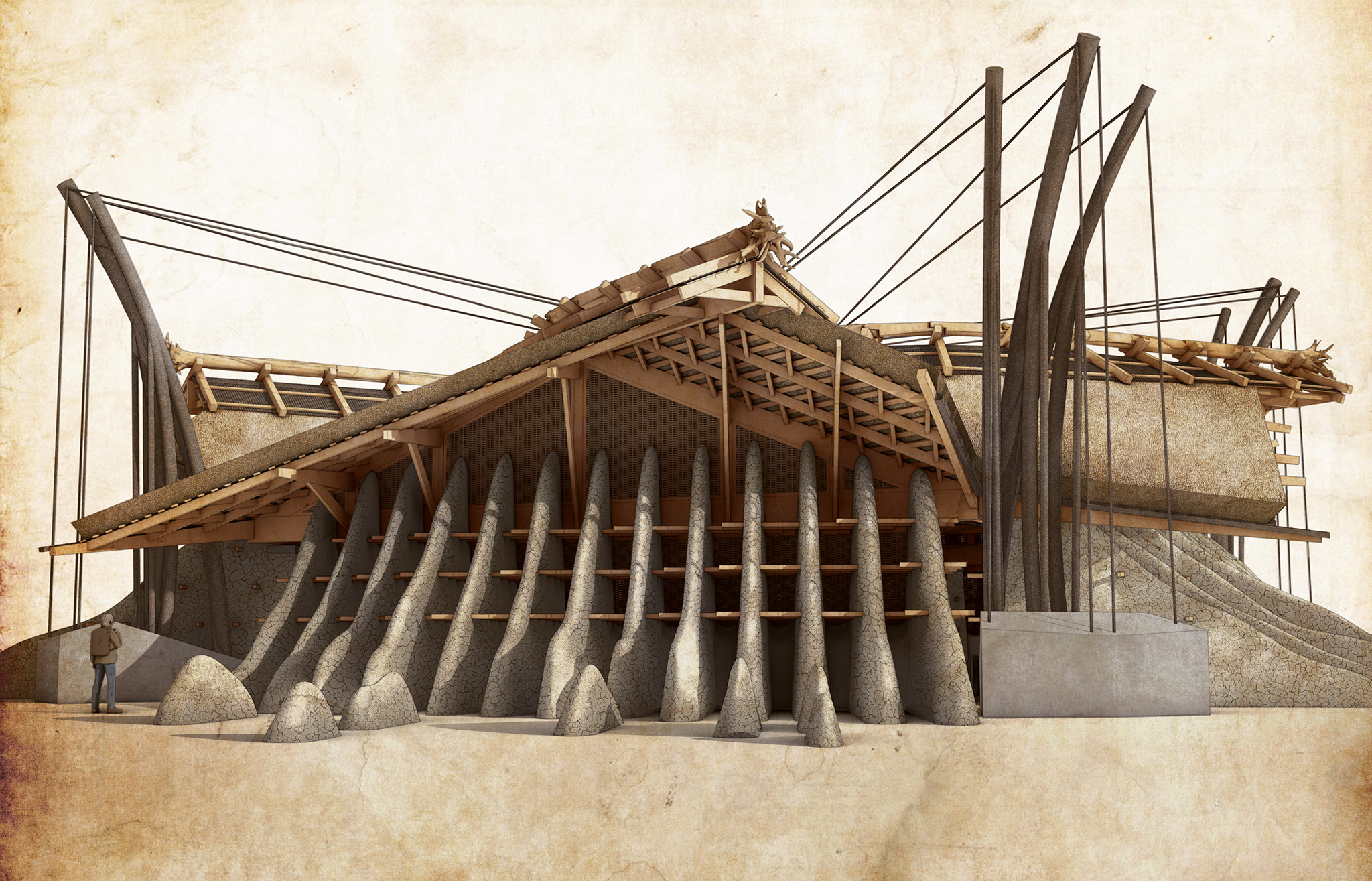
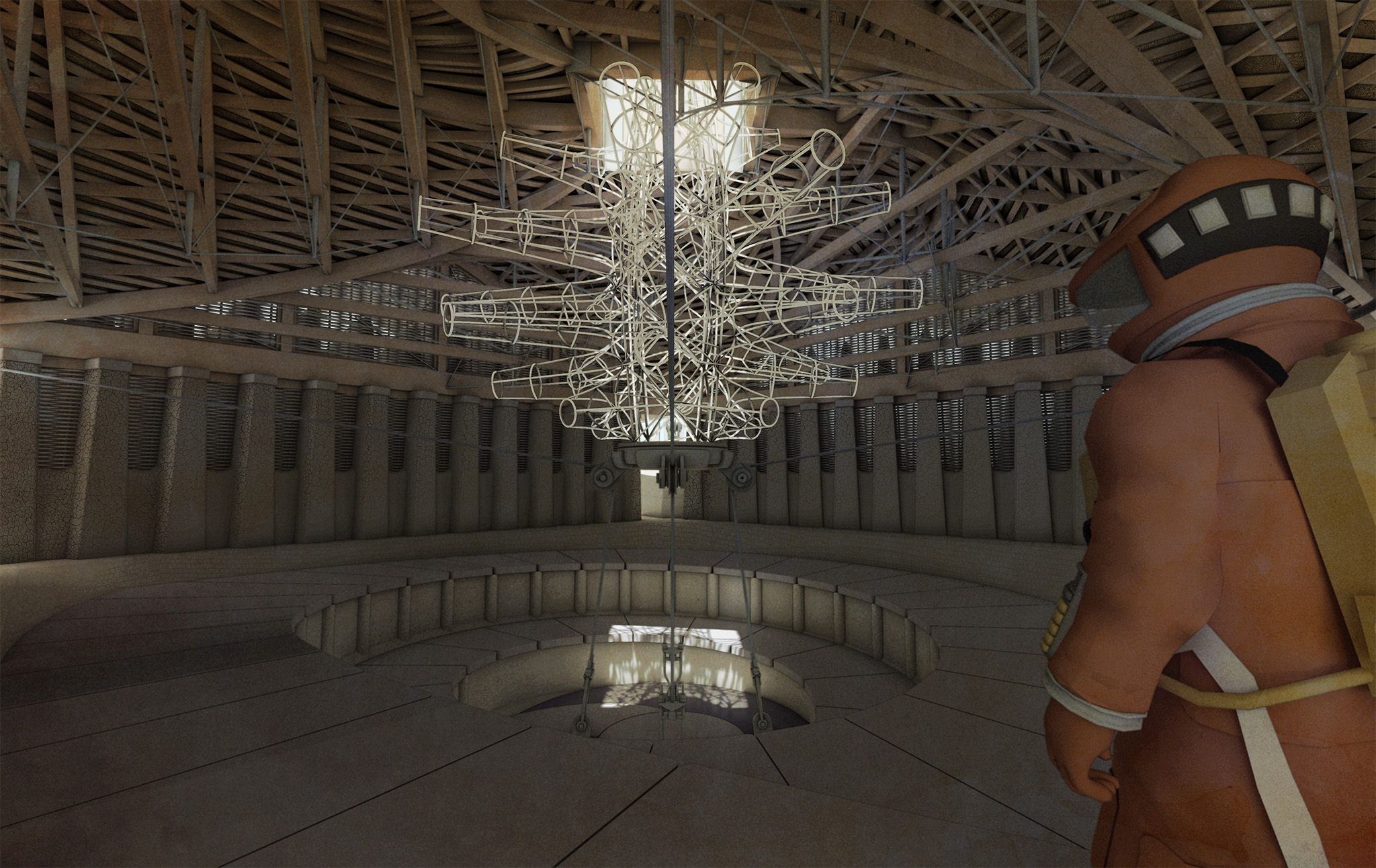
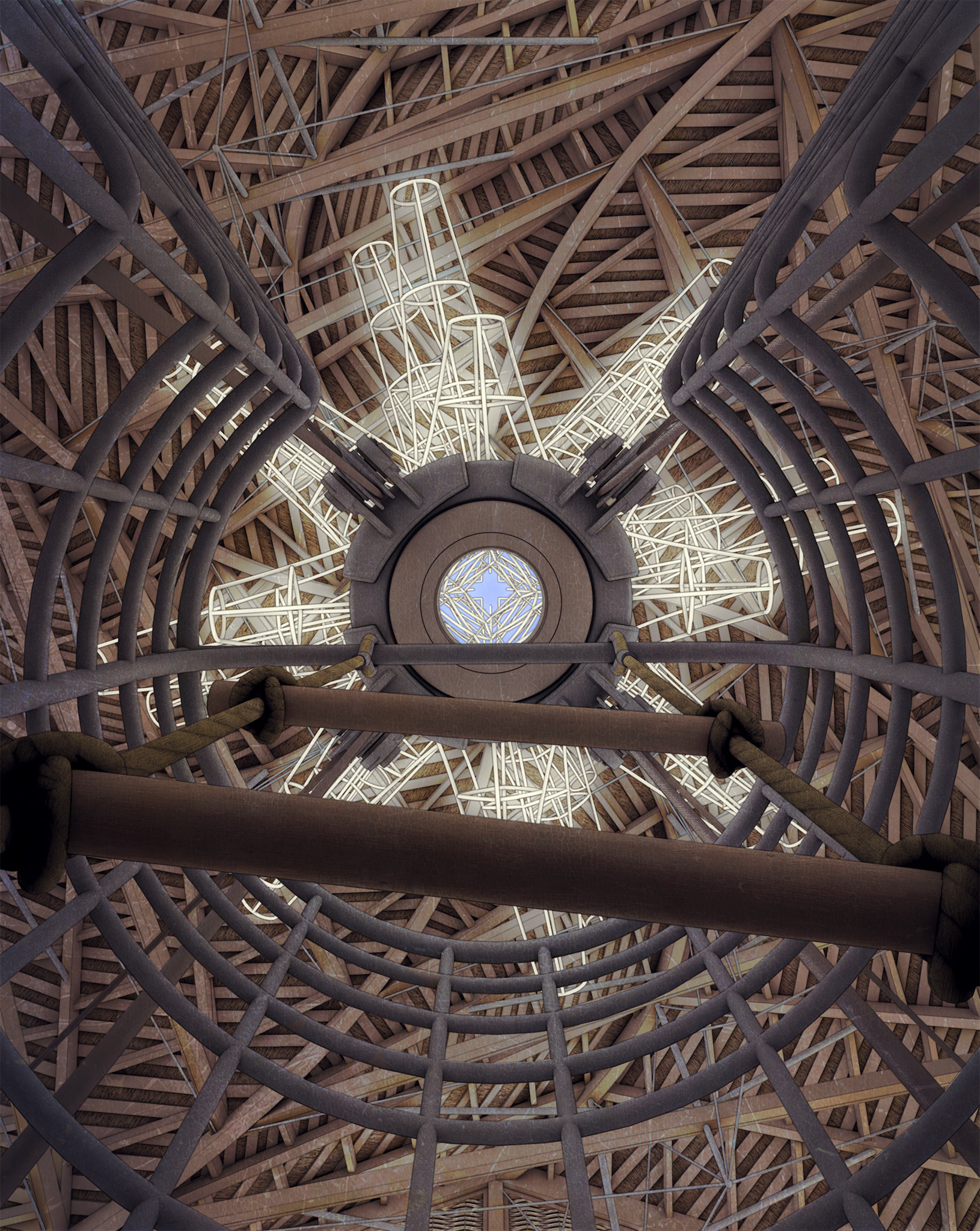
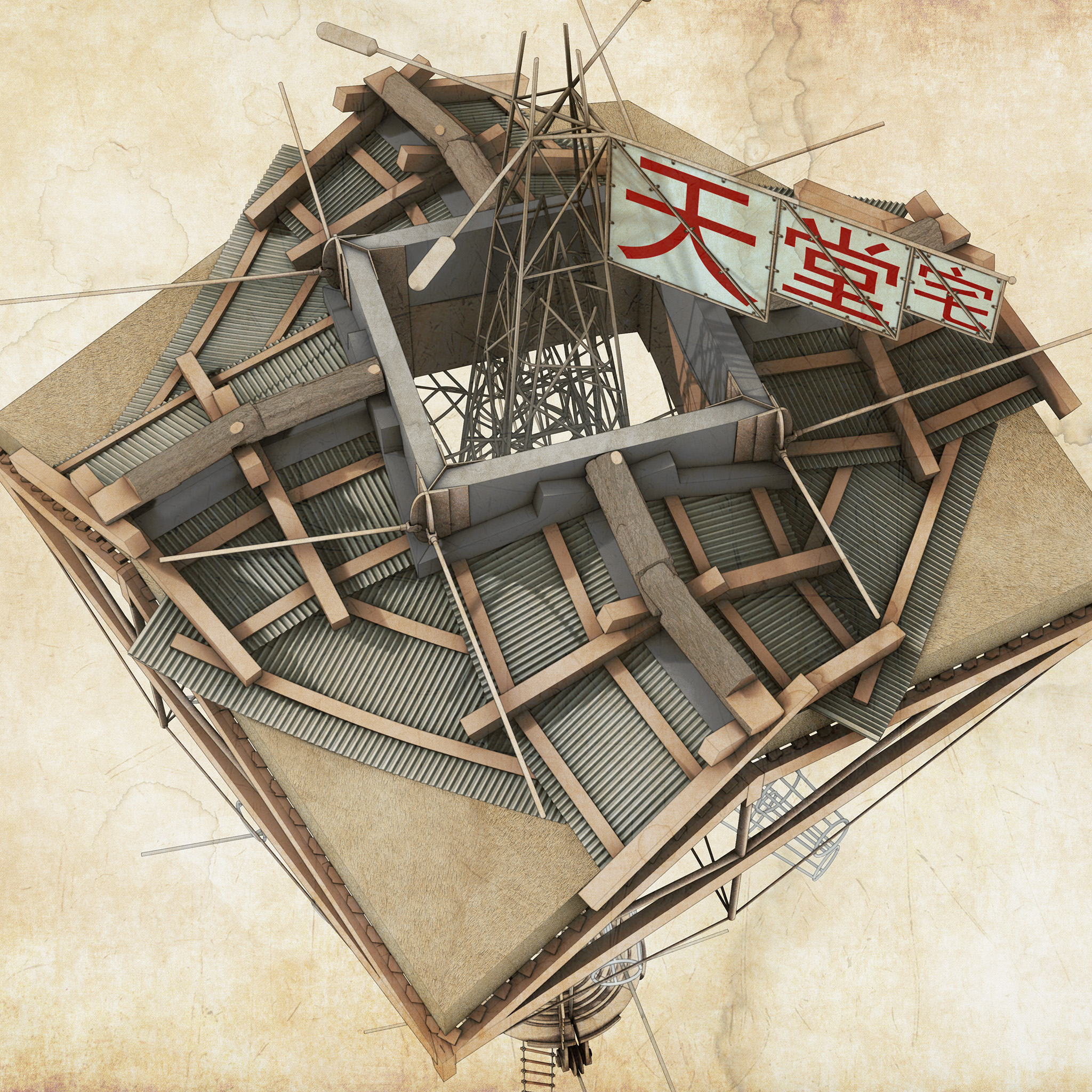
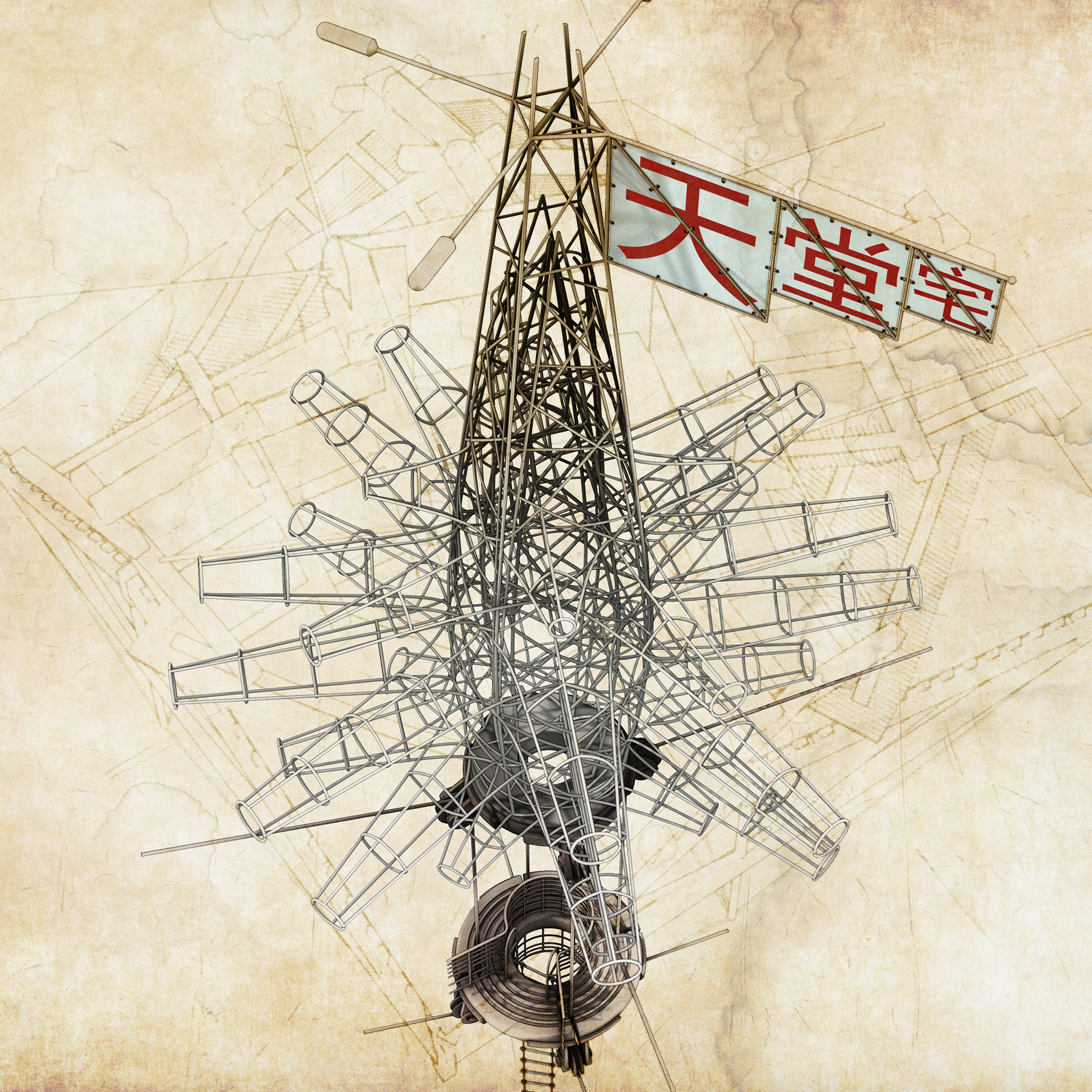
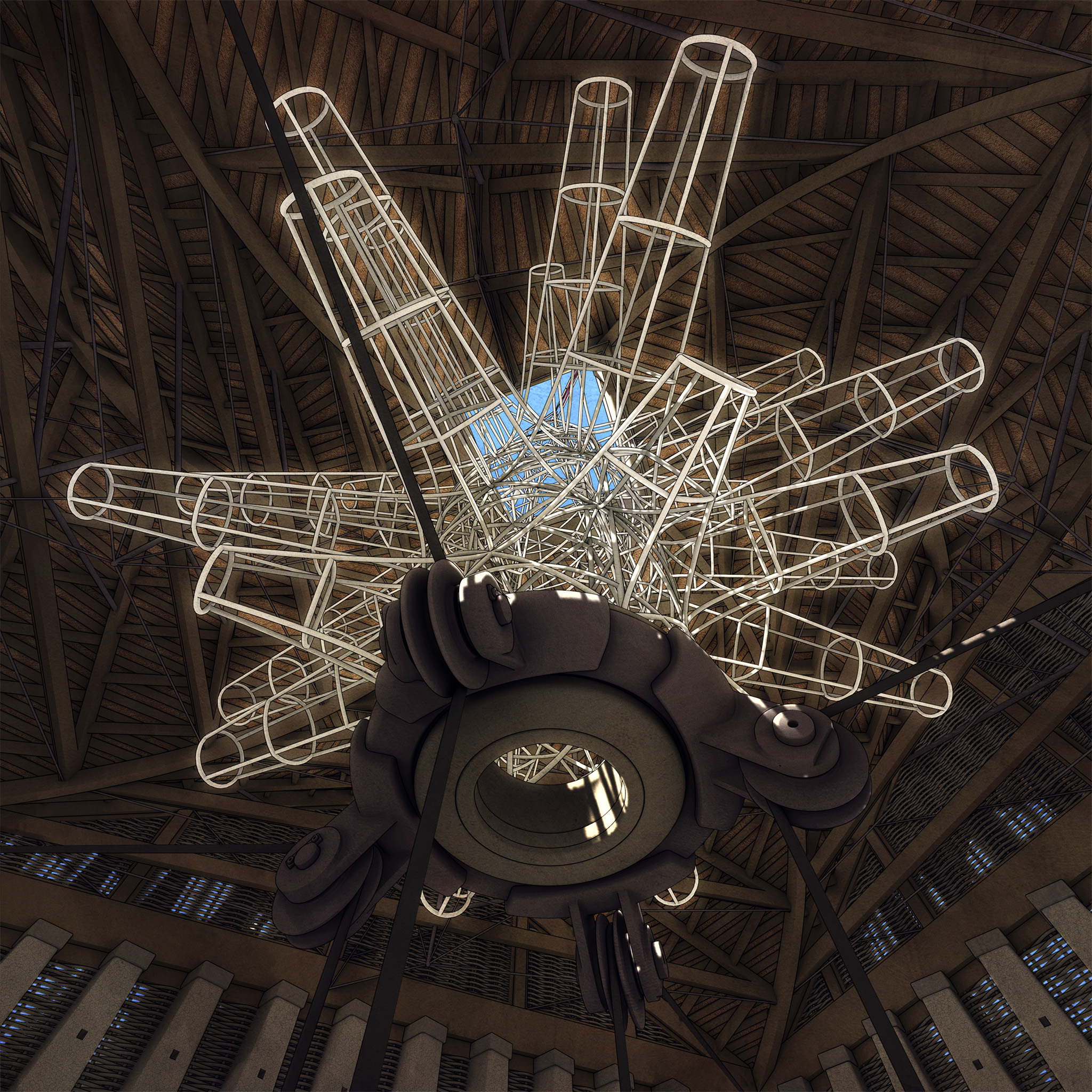
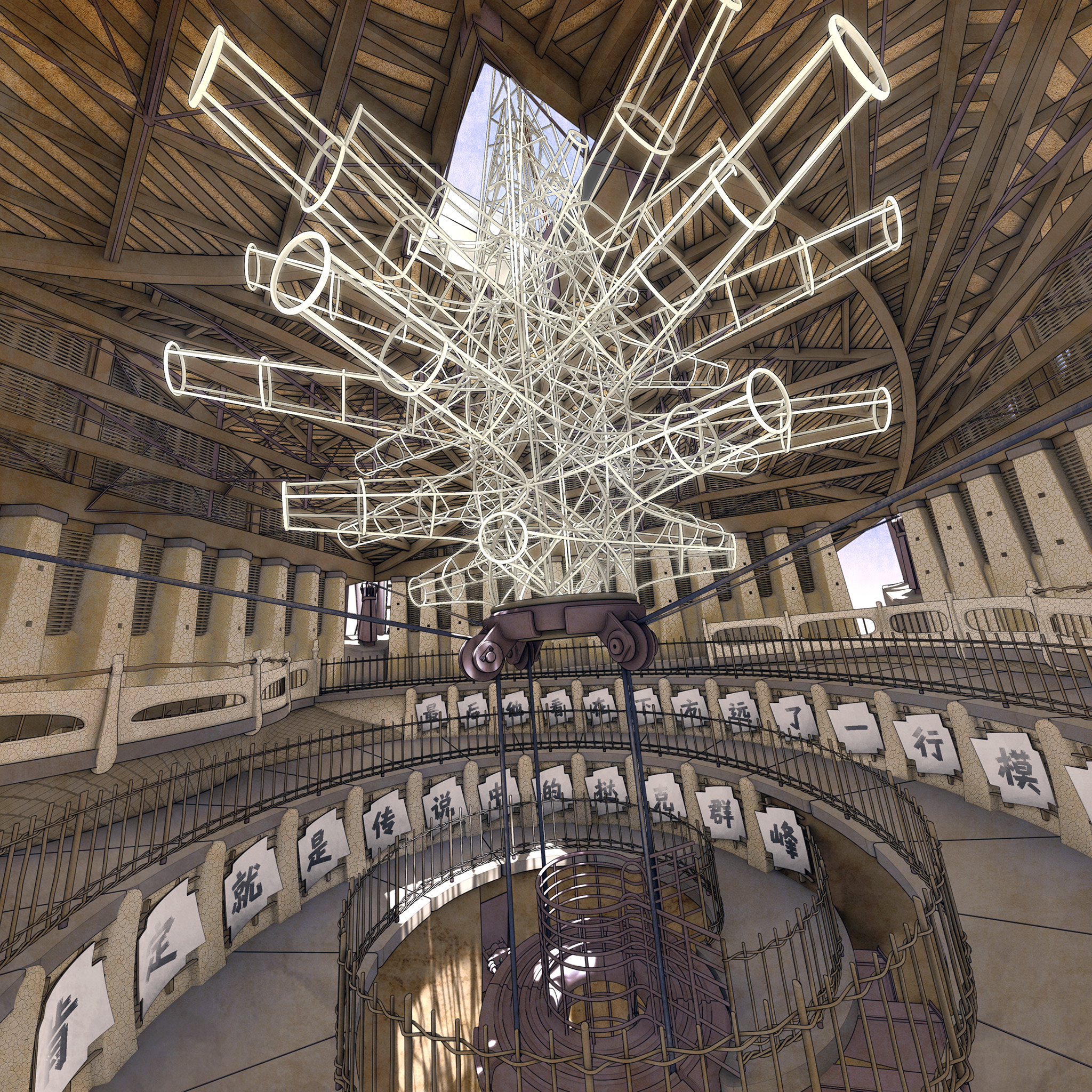
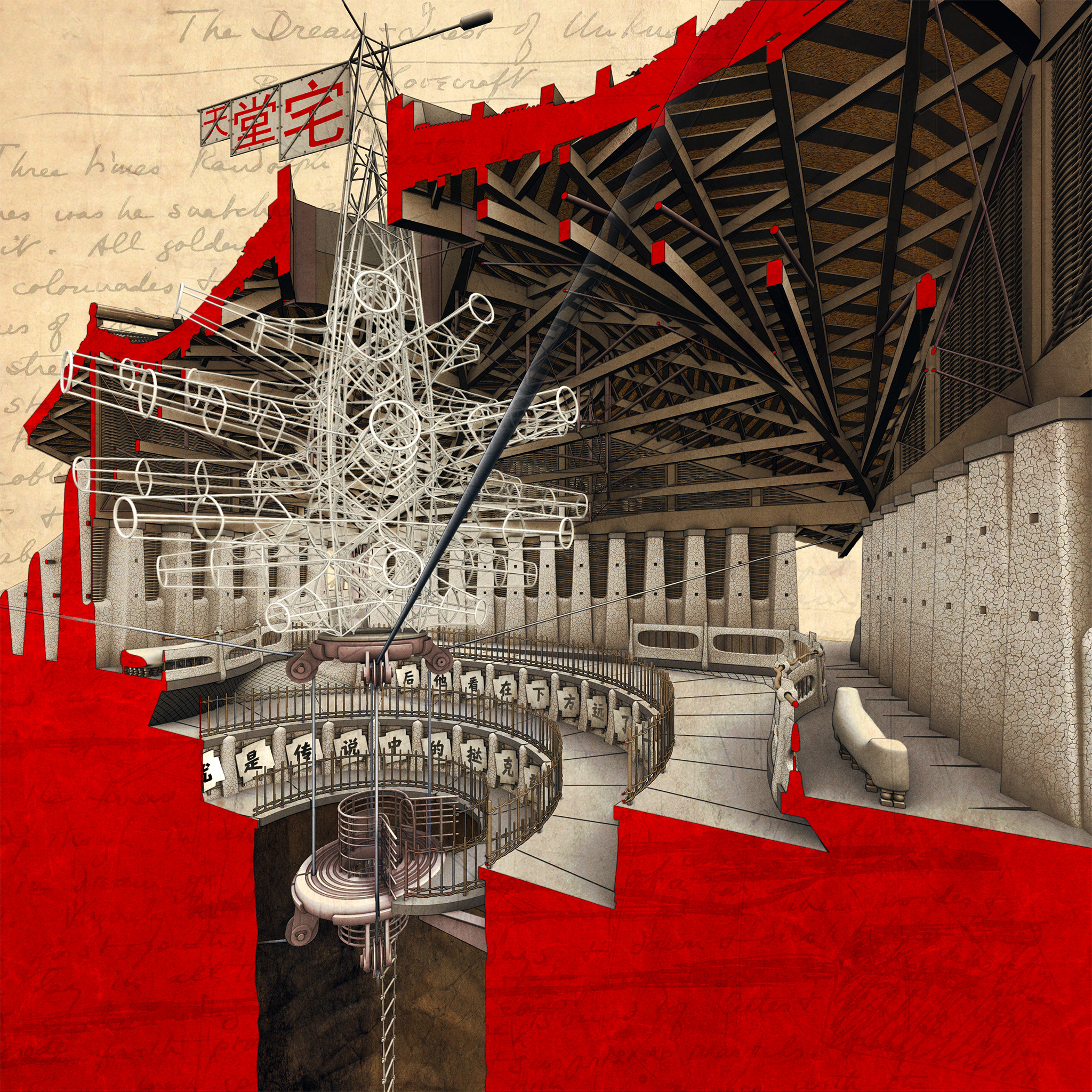
Leave a Reply